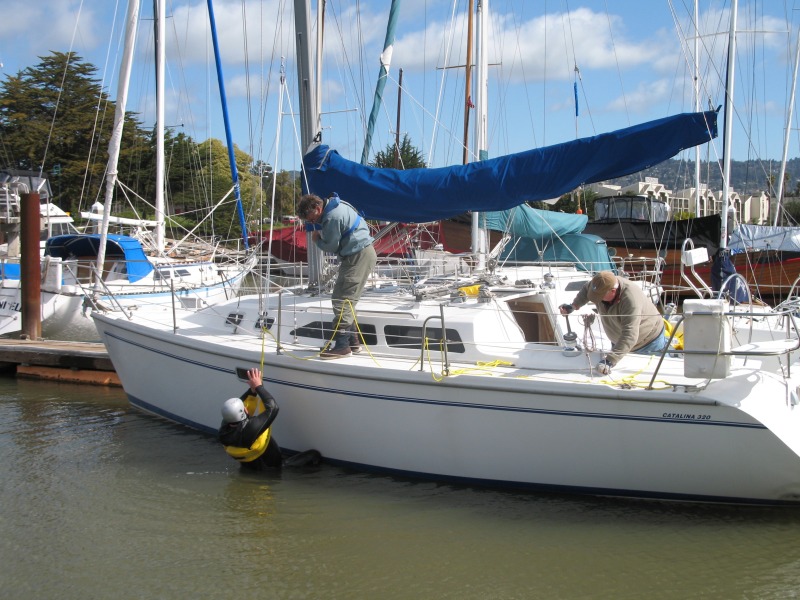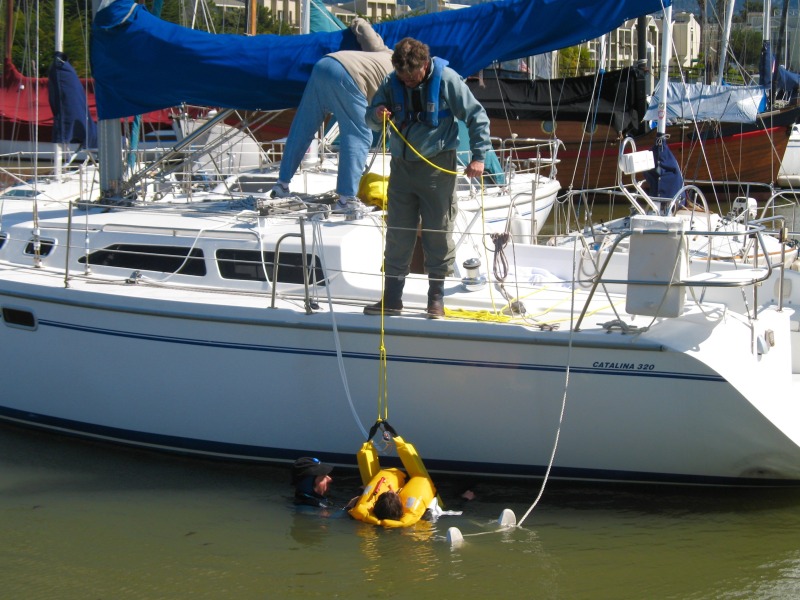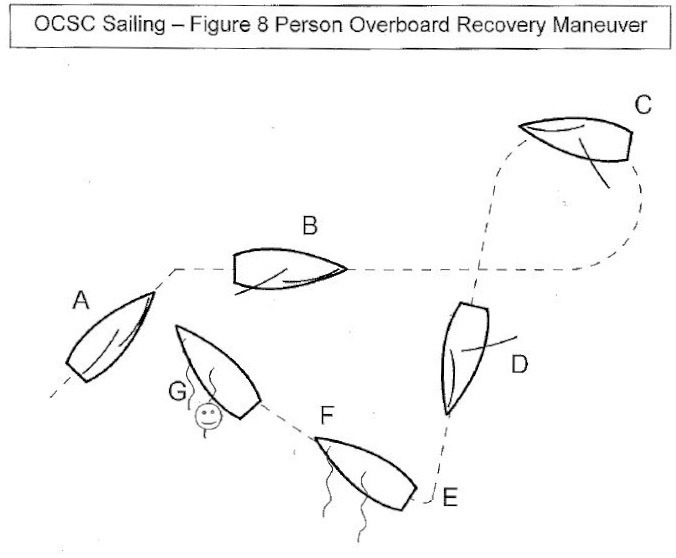
Man Overboard Practice to the Rescue
The man overboard. How that brought such dread while trying to pass the practical test before getting a sailing certification. I heard stories of people who passed all other components of the test, and then just couldn’t get Bob — the elusive orange juice container — out of the water. Oh please don’t let that happen to me.
It didn’t. I got Bob and passed the PT. Phew. And then my husband, David, had a great idea. I mean that sarcastically.
“Think about it,” he said. “Doing the man overboard procedure was the scariest part of the practical test. But imagine if — God forbid — we really have to do it. The stress would be much, much worse. So I think that every time we charter a boat, we should practice. A few times each, just to keep our skills up.” He had a point. A good one. It kills me when he’s so obviously right.

So we did. Every time we took out a boat from OCSC in Berkeley, we each practiced the man overboard procedure, often several times. It’s become part of our normal routine now: Leave the marina, raise the sails and throw Bob over. We explain the maneuver to our crew, especially the ones new to sailing, and use that to finish off the very thorough safety talk David gives ashore.
But one day, we actually needed it.
We were sailing with two of my friends, both of whom had never been in a sailboat before. David was at the helm, and I was alerting him to traffic when something small caught my eye. “Maybe it’s a kayak,” I said. “Or a downed kitesurfer.” Several other boats were passing it, so I assumed everything was okay — but we kept an eye on it.
But as we got closer, we realized it was an overturned, very small boat. A young man was sitting on the sideways hull, wearing shorts, a T-shirt and no life preserver. His female companion was in the water, holding onto the boat with one hand. We yelled out to see if they needed assistance. Despite several other boats having passed them by, they waved frantically. David and I turned to our two novice sailors: “Remember the maneuver we practiced this morning?”
“Oh yeah,” responded one of them. “So our job is to point at the people, right?” I sighed, relieved that they could contribute to the rescue instead of raising the stress level even more. I told my other friend to call 911 and ask for the Coast Guard.

There were scary moments, such as when the young woman began swimming toward our boat, which forced us to change tactics for the rescue. We struggled to get her onboard as the Coast Guard was approaching.
I wanted to get her a fleece jacket from below. “The Coast Guard is already approaching. They’ll have things to keep her warm,” said David. Moments later, the CG pulled alongside and took the rescued woman aboard their vessel. I asked if they wanted my fleece for her. “We’re the Coast Guard,” said one young man. “We have things to keep her warm.” Seriously, he used the exact same words David had just said to me. (He was right again, dammit.)
As soon we began sailing, I called OCSC to fill them in. It might not have been my clearest communication, as the adrenaline was kicking in: “I think we, uh, just rescued somebody. From a tiny boat flipped over in the water. And lots of other boats went past it! But we got her out of the water and the Coast Guard came for her and I thought they might be calling you.” All of that in about 15 seconds. The OCSC manager was very surprised and supportive.
Because the man overboard procedure was routine to David and me, we were able to remain calm and work together during a very stressful situation. And because our novice crew had already practiced it, they were able to participate in the rescue without the panic that could otherwise have very easily taken over.

At the end of the day, one of my friends exclaimed, “We’ve seen so many exciting things in the Bay today: sea lions, dolphins and people!”
The question isn’t do I want to practice the man overboard procedure, because that answer is “No!” It’s difficult, stressful, and scary to think of the real-life situation that would require that maneuver.
But that’s not the question we sailors should be considering: It’s not whether we want to practice the MOBs, it’s whether we should practice. And that answer is always a resounding: “Yes.”
Jacquelyn learned how to sail with her father, Guy Urbani, on Chesapeake Bay. She and her husband, David Malmud (both East Coasters), moved to San Francisco 12 years ago, specifically for the sailing opportunities. They still think it was a great decision.
Do you have a good MOB story, cautionary tale or advice? Let us know.
